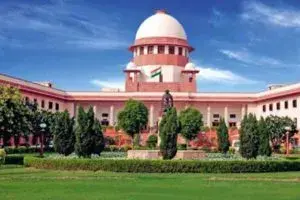India: SC asks Govt. to regulate Crypto Currency
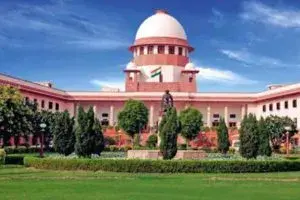 The Supreme Court of India has recently issued notice to the Ministries of Finance, Law and Justice, Information Technology, market regulators Securities and Exchange Board of India and the Reserve Bank of India
The Supreme Court of India has recently issued notice to the Ministries of Finance, Law and Justice, Information Technology, market regulators Securities and Exchange Board of India and the Reserve Bank of India
India: Noose tightened by Insolvency laws
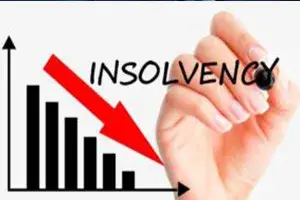 The efficacious implementation of the comprehensive and systematic Insolvency and Bankruptcy Code, 2016, (hereinafter referred to as “IBC”) has instilled confidence in the creditors being a comprehensive
The efficacious implementation of the comprehensive and systematic Insolvency and Bankruptcy Code, 2016, (hereinafter referred to as “IBC”) has instilled confidence in the creditors being a comprehensive
India: Government amends Arms Rules to boost Make in India
The Ministry of Home Affairs (hereinafter referred to as the “MHA”) has amended the Arms Rules, 2016 (hereinafter referred to as the “Parent Rules) vide notification G.S.R. 1342(E) dated October 27, 2017,
India: Anti-dumping duty on Sodium Chlorate from Canada, China and EU: Time for Chinese Anti-dumping duty yet?
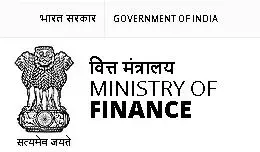 The Ministry of Finance imposed anti-dumping duty on import of Sodium Chlorate from Canada, People’s Republic of China and European Union vide Notification No. 53/2017-Customs (ADD), dated November 2, 2017, wherein it stated that there is dumping of Sodium Chlorate in India and import of it from these countries is suppressing the prices of the domestic industry.
The Ministry of Finance imposed anti-dumping duty on import of Sodium Chlorate from Canada, People’s Republic of China and European Union vide Notification No. 53/2017-Customs (ADD), dated November 2, 2017, wherein it stated that there is dumping of Sodium Chlorate in India and import of it from these countries is suppressing the prices of the domestic industry.
India: SC asks Govt. to regulate Crypto Currency
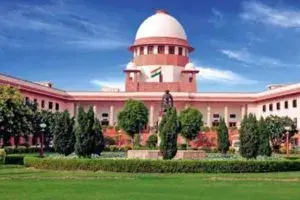
Source: supremecourtofindia.nic.in
Introduction
The Supreme Court of India has recently issued notice[1] to the Ministries of Finance, Law and Justice, Information Technology, market regulators Securities and Exchange Board of India and the Reserve Bank of India after hearing a Public Interest Litigation (Writ Petition[2] (Civil) no.1076 of 2017) under Article 32 of the Constitution against the Union of India filed by Adv. Dwaipayan Bhowmick (hereinafter referred to as “Petitioner”) seeking a regulatory framework to be laid down on Crypto Currency and wanted that the virtual currency be made accountable to the exchequer.
Previous Background
The first time that a petition was filed in the Supreme Court seeking a similar kind of regulatory framework was in July 2017. A Public Interest Litigation was filed (Writ Petition (Civil) no. 406 of 2017) under Article 32 of the Constitution against Union of India, Ministry of Finance and the Reserve Bank of India over the use and business of Bitcoins, Litecoins, Ethereum etc. The Supreme Court on July 14, 2017, directed the RBI and the other concerned ministries to clarify their stance and enact a bill on the same before disposing off the PIL.
RBI executive director had earlier on September 13, 2017 stated that, “RBI is not comfortable with Crypto Currency/ Bitcoin” [3]. The above statement makes it clear that neither the RBI nor the Government per se appears to be leading the framework as far as regulation of Bitcoin is concerned.
What is Bitcoin?
Bitcoin is a digital currency that allows people to buy goods and services and exchange money without involving banks, credit card issuers or any other third party. Bitcoin is not tied to a bank or government and allows users to spend money anonymously.
Bitcoin was introduced in 2008 by an unidentified group of programmers as a cryptocurrency as well as an electronic payment system. It is, reportedly the first decentralized digital currency where peer-to-peer transactions take place without any intermediary.
Money used to buy Bitcoin from foreign locations is completely untraceable and may be used for trading and various other financial activities directly from such Bitcoin accounts without any accountability, such trades affect the market value of other commodities inevitably.
There are over 20 other cryptocurrencies which exist today. Most of them came after bitcoin, even though bitcoin was precisely not the first. The list includes Litecoin, Peercoin, Primecoin, Ripple, Quark, and more. However, bitcoin is the only one which has created any kind of buzz, including in developing countries like India.
Primary Concern of the Petition
In the petition, the Petitioner has sought explanations regarding the delay over regulatory frameworks. The petition says,
“Lack of any concrete mechanism pending the regulatory framework in said regard has left a lot of vacuum and which has resulted in total unaccountability and unregulated Bitcoin trading and transactions. For the delay in such a situation has the seed that can cause grave financial implication on the economy of the country. It is pertinent to mention herein that emerging trend of crypto money if unchecked and unregulated is a threat to exchequers money and financial sovereignty of the country.”[4]
The primary concern of the petition is whether in India, Bitcoin be allowed or not, as the Chinese government has banned the issuance of new digital coins for fundraising, also known as initial coin offerings, and the Russian courts pronouncing the transfer of cryptocurrency into Roubles as illegal.
Petitioner’s Prayer
The Petitioner in his petition had prayed to the Supreme Court to:-
- Issue urgent directions of appropriate nature so as to direct the Respondents to regulate the flow of Bitcoin (crypto money) and to ensure that the same be made accountable to exchequer;
- Constitute a committee for framing of appropriate mechanism to regulate the flow of Bitcoin (crypto money) and to ensure that the same be made accountable to exchequer;
- Constitute a committee of experts to consider the prohibition/regulation of Bitcoin & other crypto currency.
[1]http://supremecourtofindia.nic.in/supremecourt/2017/35252/35252_2017_
[2]https://barandbench.com/wp-content/uploads/2017/11/PIL_bitcoin-watermark.pdf
[3]http://www.thehindu.com/business/Economy/rbi-not-comfortable-with-non-
fiat-cryptocurrencies-sen/article19675456.ece
[4]para no. A & B (Grounds), pg no. 34, Dwaipayan Bhowmick vs union of India & Ors.
India: Noose tightened by Insolvency laws

Source : blog.ipleaders.in
The efficacious implementation of the comprehensive and systematic Insolvency and Bankruptcy Code, 2016, (hereinafter referred to as “IBC”) has instilled confidence in the creditors being a comprehensive, systemic and speedy reform thereby paving way for development and progress. The latest revision in the IBC by the Insolvency and Bankruptcy Board of India (hereinafter referred to as “IBBI”) has further tightened the reins over the dishonest and fraudulent debtors by implementation of stricter policies controlling their conduct.
With the advent of the recent modifications, resolution applicants would be subject to more stringent scrutiny before approval of their insolvency resolution plans by the Committee of the Creditors (constituted by the Resolution Professional under the provisions of IBC). The amendments to regulations (Regulation 37, 38 & 39) empower Committee of Creditor to carry out due diligence of resolution plan submitted with respect to the insolvency proceedings thereby bestowing them with the duty to assure that the most viable plan in the said regard is accepted . The resolution plan should come from resolution professional or any person, who can really rescue the insolvent business. In order to approve the best plan the Committee of Creditors needs to satisfy
itself that:
- the plan is viable, and
- the persons who submit and implement the plan are credible
The resolution plan should disclosethe following details of:
- The resolution applicant and other persons connected with it to enable the Committee
of Creditors to assess their credibility. - Persons who will be promoters and participate in the management or control of
the business of the corporate debtor during the implementation of the resolution plan; - The holding companies, subsidiary companies, associate companies and related parties of the business entity;
- The convictions, pending criminal proceedings, disqualifications under the Companies Act, 2013, orders or directions issued by SEBI, categorization as a willful
defaulter.
The Resolution Professional under the provisions of the IBC shall submit to the Committee of Creditors all resolution plans which comply with the requirements of the IBC and regulations made thereunder, along with details of preferential transactions under Section 43, undervalued transactions under Section 45, extortionate credit transactions under Section 50, and fraudulent transactions under Section 66 of the IBC noticed by him.
Conclusion
The primary objective of IBC being resolution of insolvency of the corporate persons in a time bound manner for maximization of value of their assets could be achieved only with a credible resolution plan drawn up realistically and implemented successfully. The introduction of firm surveillance prior to according consent to the resolution plans submitted by the resolution applicants aims to ensure that only suitably best plans are approved which do not lead to liquidation, post resolution are prevented.
The IBC and the amendments introduced therein have reposed the faith in the judicious
approach of the legislature by imposing strict measures against unscrupulous debtors escaping and delaying the repayment of debts incurred by using the legislative framework thereby preventing taking advantage of one’s own wrong.
India: Government amends Arms Rules to boost Make in India
Source : mha.nic.in
Introduction:
The Ministry of Home Affairs (hereinafter referred to as the “MHA”) has amended the Arms Rules, 2016 (hereinafter referred to as the “Parent Rules) vide notification
G.S.R. 1342(E) dated October 27, 2017, and has subsequently brought into force the Arms (Amendment) Rules, 2017 (hereinafter referred to as the “Amendment Rules).[1] The Amendment Rules have been liberalized to boost “Make in India” manufacturing policy of the Government as well as to promote employment generation in the field of manufacturing of arms and ammunition.
Applicability of the Amendment Rules:
The Arms Rules, 2016, have been amended to define “existing manufacturers” to mean any manufacturer holding manufacturing license under the Arms Rules, 1962 or under the Industrial Development (Regulation) Act, 1951. Therefore, the Amendment Rules shall now apply to licenses granted by MHA for small arms & ammunition and licenses granted by Department of Industrial Policy and Promotion, under powers delegated to them, for tanks and other armored fighting vehicles, defence aircrafts, space crafts, warships of all kinds, arms and ammunition and allied items of defence equipment other than small arms.
Validity of Licenses
The Amendment Rules now state that licenses granted to licensee companies for manufacture of arms are now valid for life-time of the company. The requirement of renewal of the license after every 5 years under Rule 54 (2) of the Parent Rules has been done away with.
However, the life-time validity of the license is subject to the following conditions:
- The licensee shall be required to setup the facility for manufacture or proof test of arms and/or ammunition, recruit technical and administrative staff, develop and proof test proto-types of arms and ammunition, conduct trial runs and any other activity related to the setting up of the facility for the manufacture or proof-test of arms and ammunition, within a period of seven years from the date of grant of a licence
- The licensing authority may extend the period of seven years by a further period of three years, on the basis of a written representation received from the licensee.
- If during the period of seven years or the extended period of three years, the licensee fails to setup the manufacturing or proof-test facility or is unable to take other operating steps required for starting commercial production, the licence shall be suspended or revoked.
Sale and export of small arms and light weapons:
The Parent Rules had prescribed that small arms and light weapons produced by manufacturers would be sold to the Central Government or the State Governments with the prior approval of MHA. However, this condition has been done away in the Amendment Rules. However, the rules with respect to export of small arms and light weapons remains the same, i.e., they may be allowed for export subject to the approval of MHA in consultation with the Ministry of External Affairs, Ministry of Defence and Ministry of Commerce, on a case to case basis.
Enhanced production:
The Amendment Rules have introduced a new provision with respect to enhanced annual production of firearms and ammunitions by a licensee company, wherein licensee companies will be permitted to have enhanced production capacity up to 15% of the quantity approved under licence by giving only prior intimation to the licensing authority in this regard.
License Fees:
The licence fee for manufacture of arms has been reduced significantly. The previous licence fee was INR 500 per firearm which added up to very large sums and was a deterrent to seeking manufacturing licenses. The licence fee will now range from INR 5,000 to the maximum of INR
50,000. Further, the fee for manufacturing licence shall be payable at the time of grant of license rather than at the time of application.
Takeaway:
The Amendment Rules have been relaxed considerably to encourage manufacturing of arms. The provisions of doing away with renewal of licence every five years, allowing increase in capacity up to 15 % without prior permission and introducing a one-time licence fee is envisaged to encourage investment in the manufacturing of arms and ammunition and weapon systems in the country, and hence will generate more employment in this field. The liberalized Rules are expected to encourage the manufacturing activity and facilitate availability of world class weapons to meet the requirement of Armed Forces and Police Forces in sync with country’s defence indigenization programme.[2]
—————————————————-
India: Anti-dumping duty on Sodium Chlorate from Canada, China and EU: Time for Chinese Anti-dumping duty yet?
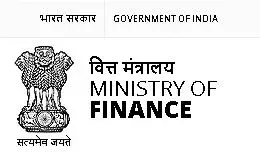
Source : www.finmin.nic.in
Introduction:
The Ministry of Finance imposed anti-dumping duty on import of Sodium Chlorate from Canada, People’s Republic of China and European Union vide Notification No. 53/2017-Customs (ADD), dated November 2, 2017, wherein it stated that there is dumping of Sodium Chlorate in India and import of it from these countries is suppressing the prices of the domestic industry.
Background:
M/s Gujarat Alkalies and Chemicals Limited and Teamec Chlorates Limited filed an application before the Designated Authority in accordance with the Customs Tariff Act, 1975, for initiation of anti-dumping investigation concerning imports of “Sodium Chlorate” originating in or exported from Canada, China and EU.
Evidence was provided by both the petitioners regarding material injury as a result of the alleged dumping in terms of increase in imports in absolute terms, deterioration in profitability and return on capital employed. The petitioner has also claimed adverse price effects evidenced by price depression and suppression.
In furtherance of sufficient prima facie evidence to the same, an investigation was initiated on May 12, 2016 by the Indian Directorate General of Anti-dumping & Allied Duties, Ministry of Commerce and Industry which recommended the Ministry of Finance to impose this anti-dumping duty in order to remove injury to the domestic industry. On the basis of this recommendation, the Ministry of Finance has now imposed the anti-dumping duty.
The effects of imposition:
It can be said that this duty is intended to effectively protect the domestic industry of India from cheap dumped imports. The Ministry also mentioned in the notification that the price injury to domestic industry has been caused by dumped imports, with a significant positive injury margin due to price suppression. Further, the imposition of these duties balances out the price injury to domestic market.
Time for a Chinese Anti-dumping duty? :
Fair-trading practices need to be ensured in order to safeguard domestic producers so that they can improve and expand and give competition to such foreign exporters one day. Imposition of anti-dumping measures on products imported from Canada and EU is a rare case but it is not the first time India has imposed an anti-dumping duty on products imported from China.
India has already imposed anti-dumping duties on other chemicals, fabrics and steel imported from China. China’s low manufacturing cost of products can arguably intimidate any domestic producer. Anti-dumping duties are imposed in order to ensure a level-playing ground for domestic industry but there should not always be a significant positive injury margin to domestic industry due to price suppression in order to impose such a duty. Legislature can make a move and can come up with an anti-dumping duty against Chinese products which are significantly cheaper than average price of domestic products.
Not only India but even other countries, especially neighboring countries should at least consider imposition of such a tax against Chinese products to encourage production from domestic industry. This could be a massive incentive for domestic industry. It can, however, be said that if such a duty is imposed, it should exclude from its purview medical instruments and essential goods of public utility as low manufacturing costs of China of such products can actually benefit the country in need.
———————————————–
[1]Notification No. 53/2017-Customs (ADD) [F.No.354/236/2017 –TRU], dated November 2, 2017. Available at:
http://www.cbec.gov.in/resources//htdocs-cbec/customs/cs-
act/notifications/notfns-2017/cs-add2017/csadd53-2017.pdf.
[2]Anti-dumping Initiation Notification F. No.14/13/2015-DGAD, dated May 12, 2016. Available at:
http://commerce.nic.in/writereaddata/traderemedies/adint_Sodium_
Chlorate_Canada_ChinaPR_EU.pdf.


